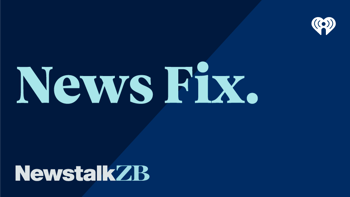
The labour market most likely continued to deteriorate in the June quarter with unemployment hitting a nine-year high, economists say.
After disappointing monthly numbers released last week showed marginal levels of job creation in the economy, expectations are that the official unemployment rate will rise to 5.3% when new data is released on Wednesday.
Stats NZ’s Labour Market Data for the June quarter will give us updates on unemployment and employment levels, as well as levels of underemployment, underutilisation and wage growth.
None of it is expected to be rosy.
“The tentative recovery in labour demand seen last quarter has lost momentum,” said ANZ senior economist Miles Workman.
There was anecdotal evidence that firms holding on to labour were not experiencing the pick-up in demand they expected, which meant more jobs were at risk, he said.
“A degree of ‘labour hoarding’ appears to have suppressed unemployment in recent quarters,” he said.
“If a recovery in economic momentum doesn’t do the heavy lifting when it comes to ‘right-sizing’ firms’ labour input, a further reduction in headcount may be needed.”
With the high-frequency data pointing to an economic slowdown, risks around employment growth over the next few quarters were skewed to the downside, he said.
Workman expects unemployment will rise to 5.3%, worse than the Reserve Bank’s forecast of 5.2%.
He also forecasts the employment rate falling 0.1% (down 0.9% for the year).
It is likely that the level of participation in the labour market – already low and flattering the unemployment rate – also fell.
Westpac senior economist Michael Gordon was no more optimistic.
“Monthly data has pointed to further job losses over the quarter, particularly among younger people,” he said.
“We expect that many of these people will have exited the workforce altogether, dampening the extent of the rise in the unemployment rate.”
The labour market typically lagged the broader economic cycle, so it was understandable we would still be seeing softness at this stage, he said.
“But it’s possible that this lag will be more prolonged than usual.”
ASB senior economist Mark Smith said he expected the Reserve Bank would likely take “more signal from trends in labour costs than the unemployment rate”.
“Labour cost growth is expected to cool, with the balance of power firmly tilted towards employers,” he said.
The Labour Cost Index should increase by 0.5% for the quarter, with annual labour cost growth cooling to 2.1%, he said.
That would be the lowest in four years.
More moderate April 2025 increases in the minimum wage would deliver a more modest than usual second-quarter increase.
Annual public sector labour cost growth was expected to ease towards 3% given the Government’s fiscal belt-tightening, he said.
“We expect wider measures to generally confirm that wage pressures are easing.”
BNZ head of research Stephen Toplis noted none of this was “supportive of household spending, which remains critical to a broader economic recovery”.
“Weak employment is a headwind on its own but comes with a kicker of raising concerns around job security,” he said.
“Combined with above-average inflation in some essential items like food and electricity, it is another factor threatening the timing and extent of the pick-up in household spending that many are forecasting.”
This Wednesday’s data would confirm the need for more rate cuts, Kiwibank economists wrote.
“Last week’s inflation data was the first test for the RBNZ given its data-dependent approach,” they said. “We believe it opened the door to a rate cut in August.”
Headline inflation rose, but the drivers appeared to be temporary.
Domestic inflation was heading in the right direction.
“Next week’s labour market is the second test for an August rate cut. And should the data print the way we expect, the door to a rate cut remains firmly open.”
Downside risks to medium-term inflation were growing, given the soft labour market and dimming global outlook, they said.
“We expect the RBNZ to cut the cash rate by 25 basis points at the August meeting. And they’ll need to go to 2.5% eventually.”
Liam Dann is business editor-at-large for the New Zealand Herald. He is a senior writer and columnist, and also presents and produces videos and podcasts. He joined the Herald in 2003.
Take your Radio, Podcasts and Music with you









